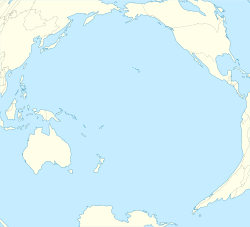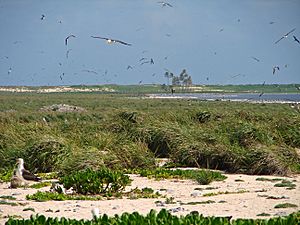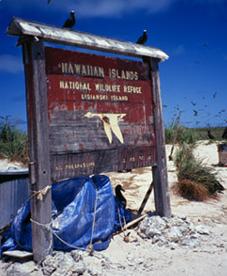Northwestern Hawaiian Islands facts for kids
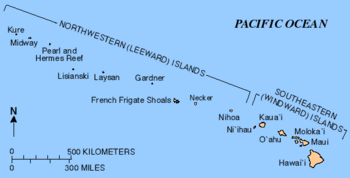
The Northwestern Hawaiian Islands form part of the Hawaiian island chain
|
|
| Geography | |
|---|---|
| Location | Pacific Ocean |
| Coordinates | 25°00′N 169°00′W / 25.000°N 169.000°W |
| Archipelago | Hawaiian Islands |
| Administration | |
| State/Territory | Hawaii and Midway Island |
The Northwestern Hawaiian Islands, also known as the Leeward Islands, are a long chain of small islands and atolls. They are located far to the northwest of the main Hawaiian islands like Kauai and Niihau. Most of these islands are part of Honolulu County in the U.S. state of Hawaii. However, Midway Atoll is a special territory of the United States and is not part of Hawaii.
These islands have a total land area of about 8.05 square kilometers (3.1075 square miles). All the islands, except Nihoa, are north of the Tropic of Cancer. This means they are the only islands in Hawaii that are not in the tropics.
The Northwestern or Leeward Hawaiian Islands include:
- Nihoa (Moku Manu) at 23°03′38″N 161°55′19″W / 23.06056°N 161.92194°W
- Necker (Mokumanamana) at 23°34′N 164°42′W / 23.567°N 164.700°W
- French Frigate Shoals (Kānemilohaʻi) at 23°52.134′N 166°17.16′W / 23.868900°N 166.28600°W
- Gardner Pinnacles (Pūhāhonu) at 25°01′N 167°59′W / 25.017°N 167.983°W
- Maro Reef (Nalukākala) at 25°24′54″N 170°35′24″W / 25.415°N 170.590°W
- Laysan (Kauō) at 25°46′03″N 171°44′00″W / 25.7675°N 171.7334°W
- Lisianski (Papaāpoho) at 26°03′51″N 173°57′57″W / 26.064031°N 173.965802°W
- Pearl and Hermes Atoll (Holoikauaua) at 27°55′40″N 175°44′17″W / 27.927687°N 175.737991°W
- Midway Atoll (Pihemanu) at 28°12′N 177°21′W / 28.200°N 177.350°W - not part of the State of Hawaii
- Kure Atoll (Mokupāpapa) at 28°25′N 178°20′W / 28.417°N 178.333°W
Contents
Discover the Islands of Hawaii's Northwest
Let's take a closer look at some of these unique islands:
- Nihoa is the youngest of the Northwestern Hawaiian Islands. It's also the tallest, with cliffs that are about 274 meters (900 feet) high. Ancient Hawaiians may have lived here for a long time.
- Necker Island is shaped like a hook and is about 82 meters (270 feet) tall. It doesn't have much plant life. Ancient Hawaiians used it for religious ceremonies, but they didn't live there permanently.
- French Frigate Shoals is a large atoll, which is a ring-shaped coral reef with small islands. It has the biggest coral reef area in Hawaii, covering about 518 square kilometers (200 square miles). One of its small islands, Tern Island, has an airport and some buildings.
- Gardner Pinnacles consists of two small, rocky peaks. It's the last rocky island in the Hawaiian chain. Even though the island itself is tiny, the coral reef around it is huge and full of different marine life.
- Maro Reef is a very rich reef system, often called a "coral garden." It covers about 430 square kilometers (166 square miles).
- Laysan is a low, sandy island that covers about 3.7 square kilometers (913 acres). It has a natural lake in its middle, which is very salty. This island has the most diverse ecosystem in the Northwestern Hawaiian Islands. It's home to about two million seabirds from seventeen different species.
- Lisianski is about 1.6 square kilometers (400 acres) in size. It's similar to Laysan but doesn't have a lake. While the island itself has a bit less variety of life, the reef around it is very fertile.
- Pearl and Hermes Atoll is another atoll, much like French Frigate Shoals. It has less dry land. Because of this, people who collected bird droppings (guano) and feathers mostly left it alone.
- Midway Atoll is the most famous of the Northwestern Hawaiian Islands and also the largest. The important Battle of Midway during World War II was fought here. People who work for the U.S. government still live on Midway.
- Kure Atoll is a circular atoll. It includes Green Island, which is about 0.95 square kilometers (236 acres). This island used to have a station and a runway, but they have been removed. Kure is one of the islands with less biodiversity in the Northwestern Hawaiian Islands.
Some other islands or reefs were once thought to be part of this chain. However, they were later found to be either imaginary islands or mistakes in mapping existing ones. For example, "Two Brothers Reef" and "Krusenstern Reef" appeared on maps but were later proven not to exist.
How the Islands Were Formed
The Northwestern Hawaiian Islands were created between 7 and 30 million years ago. They formed as shield volcanoes over a special place called a volcanic hotspot. This is the same hotspot that created the Emperor Seamounts to the north and the main Hawaiian Islands to the south.
As the Pacific Plate (a huge piece of Earth's crust) moved north and then northwest over this hotspot, volcanic eruptions built up islands in a line. Over millions of years, these isolated islands slowly wore away and sank. They changed from tall islands, like the main Hawaiian Islands today, into atolls (or underwater mountains called seamounts). This process happens north of a special line called the Darwin Point.
Each of the Northwestern Hawaiian Islands is at a different stage of this wearing-away process. Nihoa, Necker, and Gardner Pinnacles are still rocky islands made of basalt. They haven't worn down enough to become atolls. Laysan and Lisianski are low, sandy islands that have been eroding for a longer time. French Frigate Shoals, Pearl and Hermes, Midway, and Kure are all atolls.
North of the Darwin Point, coral reefs grow more slowly than the island sinks. As the Pacific Plate moves northwest, an island eventually becomes a seamount when it crosses this line. Kure Atoll is right on the Darwin Point. It will eventually sink beneath the ocean when its coral reef can no longer keep up with how fast the island is sinking. This is the future for every Hawaiian island.
Amazing Wildlife and Unique Species
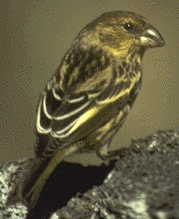
The Hawaiian Islands are very far from other continents. They are about 4,000 kilometers (2,500 miles) from North America and 6,100 kilometers (3,800 miles) from Asia. Because of this isolation, the Hawaiian Islands have an incredible number of unique species. Only animals that could fly or swim huge distances were able to reach these islands.
While people have greatly changed the ecosystems of the main Hawaiian islands by bringing in new species, the ecosystems of the Northwestern Hawaiian Islands are mostly still natural. The large coral reefs in Papahānaumokuākea are home to over 7,000 different kinds of marine animals. More than 1,700 of these species are endemic to the Hawaiian Islands. This means they are found nowhere else in the world! Because of this, the region is sometimes called "America's Galápagos".
Even though these islands haven't suffered as much extinction as the main islands, they have faced challenges. From the late 1800s to the early 1900s, fishermen, guano miners, and feather hunters killed many birds and sea creatures. Rabbits were also brought to Laysan and Lisianski. They multiplied quickly and ate most of the plants, causing several plant species to disappear forever. Luckily, most of this damage has been fixed, and the islands have largely returned to their natural state.
Important Bird Area
The Northwestern Hawaiian Islands are recognized as an Important Bird Area (IBA) by BirdLife International. This is because of the many seabirds and unique landbirds that live there. The seabird colonies in this area are one of the largest groups of tropical seabirds in the world. They are home to over 14 million birds from 21 different species!
Some of the unique species found only in the Northwestern Hawaiian Islands include the Nihoa finch and Laysan finch. There's also the Laysan duck, which is the rarest native waterfowl in the United States. Another special plant is the Nihoa fan palm. Other important species include the Laysan albatross, the highly endangered Hawaiian monk seal, and the green sea turtle. The only native trapdoor spiders in Hawaii were recently found here. Most of these unique species are very vulnerable. A single major disaster could wipe out all the plants on a small island. Also, 70% of all coral reefs in the United States are found here.
Exploring These Remote Islands
We know that the Ancient Hawaiians traveled from the main islands as far as Mokumanamana (Necker Island). They might have even gone further to French Frigate Shoals. However, they must have left by the 1700s, because when Europeans discovered the islands, they were empty. Many old farming terraces have been found on Nihoa, showing that Hawaiians lived there for a long time. Mokumanamana, which has fewer plants, probably couldn't support many people for long. It's believed that early Hawaiians only visited Mokumanamana for religious reasons.
The first of the Leeward Islands discovered by Europeans was Nihoa. James Colnett found it in 1786, though William Douglas often gets the credit. Later that year, La Pérouse discovered Necker Island and named it after Jacques Necker, a French minister. La Pérouse then went on to discover French Frigate Shoals. The last of the Northwestern Hawaiian Islands to be found was Midway Atoll, discovered by N.C. Middlebrooks in 1859. In 1925, the Tanager Expedition explored many of these islands. They mapped the islands, found new species, and discovered ancient sites on Nihoa and Necker.
Naming the Islands
Most of these islands have two names: one in English and one in Hawaiian. The Hawaiian names used today were mostly created in modern times. The original names that ancient Hawaiians gave to these islands can be found in old chants (oli) and stories (moʻolelo).
A Special National Monument
On June 15, 2006, U.S. President George W. Bush announced the creation of the Papahānaumokuākea Marine National Monument. This monument protects the islands and the waters around them. It became the largest marine wildlife reserve in the world at that time. President Theodore Roosevelt had already made the Northwestern Hawaiian chain a bird sanctuary in 1909. The islands had also been protected since 2000 as an 'ecosystem reserve' by President Bill Clinton. But making it a national monument gave it even stronger protection. About 360,000 square kilometers (139,000 square miles) of ocean were set aside for protection, which is roughly the size of the U.S. state of California.
In August 2016, President Barack Obama made the monument even bigger, expanding its area by about four times. This made it the world's largest marine protected area at that time.
To visit the Monument, you need a special permit. This system is managed by the NOAA, FWS, and the state of Hawaii. Anyone visiting the islands must follow strict rules to prevent new species from entering and harming the ecosystem. For example, all clothes must be bought new and kept sealed until you arrive. All "soft" items, like camera straps or blankets, must also be new. "Hard" items, like cameras or binoculars, must be cleaned very carefully. Then, every item must be frozen for 48 hours! You even need a new set of equipment for each island you visit to avoid spreading species between islands. However, French Frigate Shoals and Midway Atoll are exceptions to these rules. This is because they have already been changed a lot by humans.
See also
 In Spanish: Islas de Sotavento (Hawái) para niños
In Spanish: Islas de Sotavento (Hawái) para niños


